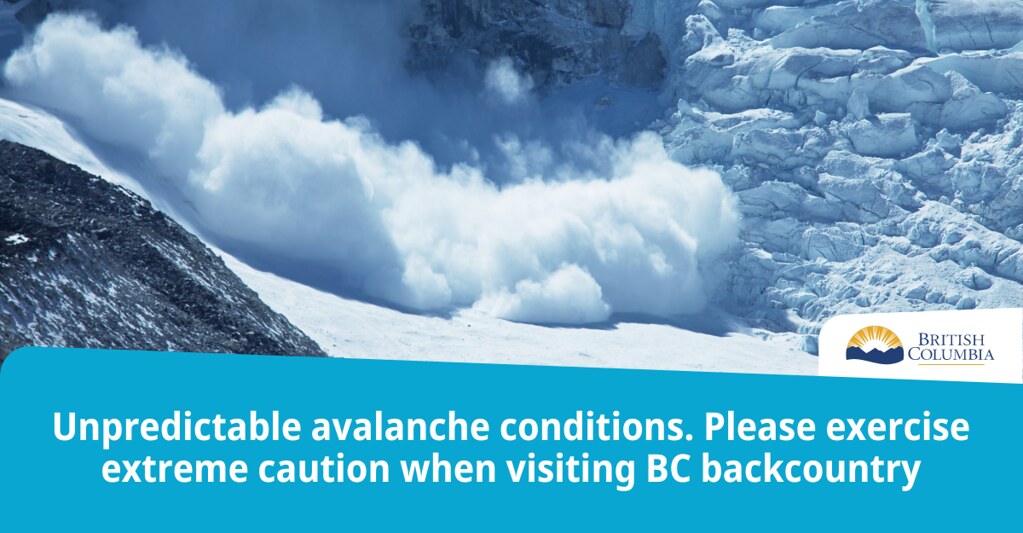
B.C. urges ‘extreme caution in backcountry’ with high avalanche risk forecast
January 25, 2023
By Avert staff

B.C.’s new minister of emergency management and climate readiness is urging extreme caution in the backcountry in light of continued high and unusual avalanche risk forecast in many areas of B.C.
In a statement yesterday, Bowinn Ma noted avalanches have already led to five deaths in B.C. this year.
“This year’s snowpack is being compared to 2003, which was one of the worst years for avalanche fatalities. Please check the avalanche forecast and follow any guidance from Avalanche Canada to stay safe,” Ma said.
Ryan Buhler, forecast supervisor with Avalanche Canada, said in many regions they are seeing a deep, persistent slab avalanche problem, which has the potential for large, human triggered avalanches with little warning. “This is a highly unusual and unpredictable snowpack. The complication with this snowpack setup is that the layers are deep enough that we are less likely to see clues of instability, like nearby avalanche activity, ‘whumpfing’ or cracking snow,” he said.
Buhler said backcountry users should always check the avalanche forecast at: https://www.avalanche.ca/en/map – carry a transceiver, probe and shovel, and be trained to use them.
The conditions are expected to last the remainder of the winter season in some areas.
Advice from Avalanche Canada:
- Avoid steep, shallow and rocky terrain features. Everyone in a backcountry party needs the essential gear, such as a transceiver, shovel and probe, and the training to use them.
- Adopt a cautious mindset when in avalanche terrain.
- Be diligent about terrain choices. Sticking to slope angles of less than 30 degrees when in clearings, open trees and alpine terrain can help minimize risk.
- Follow disciplined group decision-making, ensuring that each group member is engaged in terrain selection.
- Minimize exposure to overhead hazards, given that these avalanches can be remotely triggered and travel far in runout zones.
- Travel one at a time when exposed to avalanche terrain and regroup in safe spots well away from overhead hazards.
- Avoid exposure to terrain traps, such as gullies, cliffs and trees, to reduce the risk of being caught in an avalanche.
- Practise patience, avoid complacency and accept that you may need to manage this risk for weeks or months to come.
Print this page